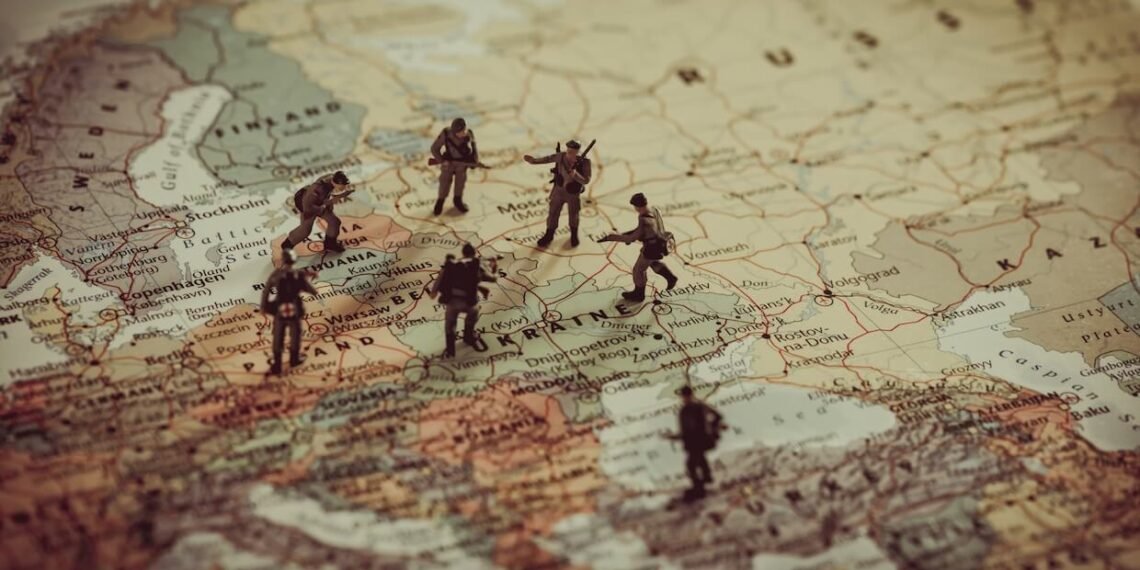As Russia’s invasion of Ukraine reshapes Europe’s security landscape, the EU faces a “watershed moment” demanding unprecedented defense spending and strategic autonomy. The “ReArm Europe Plan” allocates €800 billion for defense modernization, while EU states’ military expenditure has already surged 30% since 2021. Yet, this security buildup comes at a profound human cost: since 2022, over 1.3 million soldiers have been killed or wounded, with tens of thousands more facing lifelong trauma. While Europe seeks to safeguard territorial integrity and independence, the article questions whether spiraling militarization undermines humanitarian priorities, deepens instability, and perpetuates cycles of suffering rather than ensuring lasting security.
By Mohammed Afnan
Europe faces a serious threat to its territorial integrity, unprecedented since the Cold War. It is going through a “watershed moment in its security.” “Business as usual approach of underinvestment and fragmentation” is no longer viable given the Ukraine-Russia war and the American President Donald Trump’s frequent calls for the EU to take greater responsibility for its own defense.
Recent calls for increased defense spending by NATO members, predominantly including EU states, along with US Vice President J.D. Vance’s emphasis on “Europe’s threat within” at the last Munich Security Conference, signal the potential for tectonic shifts in the transatlantic relationship. It requires the EU to adopt a holistic and horizontal approach integrating defense and security dimensions of the continent. Nevertheless, questions remain regarding how far the EU can go, particularly within the milieu of historic transatlantic connections between the EU and the US, and the internal divergences concerning security within the EU member states. Since the wider debates have been taking place in this regard, the article will examine how a resurgence of traditional security concerns on the backdrop of Russia-Ukraine War, is going to affect the human cost of war.
The Russian invasion of Ukraine has changed the European defense landscape since February 2022. European Commissions’ “White Paper for European Defense –Readiness 2030” proposed a vision to rearm Europe by enhancing the indigenous defense production and rapid deployment of military troops and assets across the EU. It clearly signifies the European Union’s maneuver to protect its citizens and consolidate its defense capabilities. “Readiness Plan,” also known as “ReArm Europe Plan” presented in March 2025 suggests leveraging over €800 billion in defense spending. As a matter of time, EU clearly understands the importance of strategic independence in the chaotic world.
Following the Russian invasion, EU leaders adopted the Versailles declaration pledging to enhance investment in defense sector. It aimed to boost the defense industry and gain strategic independence. Between 2021 and 2024, EU member states overall defense expenditure stood at €326 billion, marking an increase of 30%. The expenditure is expected to increase by more than €100 billion in real terms by 2027. It correlates with the defense investments too. In 2023, compared to the preceding year, defense investment increased by 17%, setting a record high of €72 billion. In 2024 alone, €102 billion was invested, in which beyond €90 billion was used for defense equipment procurement. Nevertheless, it raises questions regarding the utility of these enormous amounts in terms of enhancing the conditions of citizens, even those of soldiers engaged in deadly conflicts. Eventually, border defense and territorial integrity comes at the cost of losing lives, undermining the cost of human lives.
Throughout history, the recurring military conflicts and wars have brought devastating damage and countless destruction to both the lives and the physical environment. It is estimated that more than 37 million combatants have died in wars since 1800. If we take civilian deaths into consideration, the number of deceased will pile up. In the Second World War alone, which spread across much of the globe, 21 million soldiers died. Based on the data provided by the Uppsala Conflict Data Program (UCDP), 3.9 million people, including both civilians and combatants, have died in the armed conflicts between 1989 and 2024. Europe and America witnessed the fewest deaths, with around 370,000 and 230,000 deaths, respectively.
Parallels have been drawn comparing the casualties of the Second World War and the ongoing Russia-Ukraine war. Based on the issue brief by Center for Strategic and International Studies (CSIS), over 950,000 Russian soldiers have been killed or wounded since the war began between Russia and Ukraine. Most of these soldiers belong to Russia’s Far North, Far East, and prisons. On the Ukrainian side, a total of 400,000 have been killed or wounded, and between 60,000 and 100,000 combatants have lost their lives. The severe injuries may have taken the well-being of the remainder of their life. Defense spending with its strong emphasizes on defense production and modernization makes these lives and their relatives futile. It may hinder the post-war reconstruction, especially in addressing long-term psychological trauma. Along with that, there are apprehensions that this increased spending could waste resources and cause political instability without delivering real security for the citizens.
Overall, the resurgence of traditional security threats in Europe due to the Russia-Ukraine war is accompanied by sharply increased defense spending and military preparedness. This, however, comes with a high human cost in terms of lives lost and wounded, reminding that the price of safeguarding territorial integrity and security continues to be profound human suffering and loss. Human cost of war may hinder the post-war reconstructions. This needs to be taken into consideration in policy circles.
In sum, Europe’s renewed focus on defense and security — marked by unprecedented spending, strategic realignments, and calls for autonomy — reflects an unavoidable response to the Russia-Ukraine war and shifting transatlantic dynamics. Yet, this militarization entails profound trade-offs. While €800 billion in planned defense investments aims to safeguard territorial integrity, the staggering casualties — over 1.3 million killed or wounded since 2022 — highlight the immense human cost of security. Without balancing strategic preparedness with humanitarian priorities and post-war recovery, Europe risks undermining the very values it seeks to defend, perpetuating cycles of suffering and instability.



One Response
Deep academical analysis on the tensions of human cost